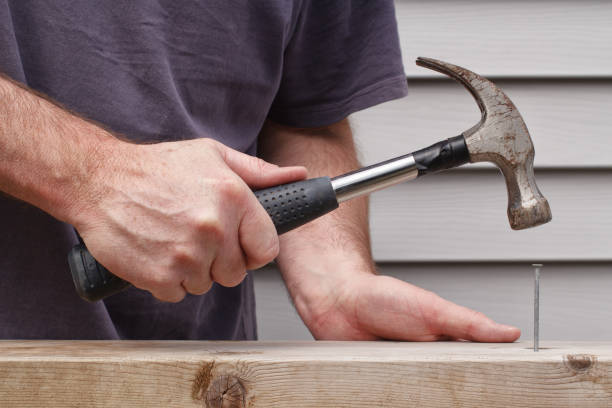In the exciting world of modern plumbing, innovation meets necessity and creates solutions that redefine our daily lives. As homes age, so do their plumbing systems, leading to issues like frequent leaks, erratic water pressure, and rusty water. The unseen problems, like water damage and mould growth, can be even more troubling.
For those grappling with such challenges or residing in older homes, a change is not just beneficial but essential. Enter cross-linked polyethylene, commonly known as PEX pipe. This material stands out as a flexible, durable, and cost-effective option, poised to modernize plumbing systems and enhance home value.
What is PEX?
PEX, a modified form of polyethylene, is enhanced through a process known as cross-linking. This technique involves bonding the polymer chains together, resulting in a material that is significantly stronger, more flexible, and has greater heat resistance than standard polyethylene.
PEX has gained popularity across various industries, particularly in residential and commercial plumbing, for its remarkable qualities. It’s less likely to burst if water inside it freezes and can withstand high water pressure.
PEX’s Development and Adoption
The journey of PEX pipes began in the 1960s in Europe and slowly found its footing. By the 1980s, it had become a preferred choice for radiant floor heating systems in Europe. Its entry into North American homes in the 1990s and early 2000s marked a significant shift. Initially used for underfloor heating, PEX soon became a favoured material for other residential plumbing applications, thanks to its heat resistance, flexibility, and durability.
Types and Properties of PEX
PEX comes in three unique varieties: PEX-A, PEX-B, and PEX-C. Each type is crafted through a distinct manufacturing process, endowing it with specific characteristics and advantages. However, they all have the following essential qualities in common: lifespan, chemical resistance, freezing and heat resistance, and flexibility.
While PEX is an excellent choice for many applications, it’s essential to note its limitations. It may not perform as well in environments with high temperatures and pressures or when exposed to sunlight. Despite these constraints, PEX offers superior performance and cost savings in recommended applications.
Advantages of PEX Pipes in Plumbing
PEX’s benefits in plumbing are significant and diverse. Here’s a closer look:
- Durability and Resistance: PEX pipe doesn’t pit or corrode, a common issue in metal pipes. Its resistance to corrosion and scaling is a major advantage, ensuring a longer lifespan for plumbing systems.
- Installation Ease: The flexibility of PEX makes it easier to install. It can bend around corners, eliminating the need for multiple fittings and reducing installation time.
- Cost-Effectiveness: Generally, PEX is more affordable than traditional materials like copper, both in terms of material cost and labour.
- Resistance to Freeze-Breakage: PEX can endure freezing temperatures without bursting, a critical feature in colder climates.
- Noise Reduction: The material absorbs the sound of flowing water, resulting in a quieter plumbing system compared to copper pipes.
As we explore these advantages of PEX pipes, it becomes clear why PEX is increasingly replacing traditional materials like copper and PVC in plumbing applications. Its versatility, combined with its cost and performance benefits, makes it an attractive choice for new constructions and renovations alike.
PEX in Residential and Commercial Plumbing
PEX is rapidly replacing older materials like copper and PVC in both homes and commercial buildings. Its flexibility allows it to snake through walls and corners with minimal jointing, reducing leak risks. From the main water service line to the smallest indoor plumbing, PEX is making its mark for its ease of handling and resistance to common plumbing issues.
Benefits in Residential Construction:
- Fewer Joints: PEX pipe requires fewer fittings and joints, reducing potential leak points.
- Easy Manipulation: Its flexibility allows for easier installation in tight spaces.
- Reduced Leak Risk: With fewer connections, the risk of leaks significantly drops, making it a reliable choice for homeowners.
PEX in Commercial Use:
- Durability: PEX stands up well to constant use, an essential feature in commercial buildings.
- Flexibility: Its ability to bend and flex suits the complex plumbing needs of larger structures.
Comparative Analysis: PEX vs. Copper
PEX – Pros:
- Flexibility: PEX pipe can be easily manoeuvred, speeding up and simplifying installation.
- Cost: Generally, PEX is more budget-friendly.
- Durability: It resists corrosion and freeze-breakage better than copper.
- Quiet Operation: PEX absorbs water flow noise more effectively.
- Easier Connections: Heat fusion makes PEX connections reliable without soldering.
PEX – Cons:
- UV Sensitivity: PEX can’t handle direct sunlight exposure.
- Permeability: Certain chemicals can permeate through PEX.
- Aesthetic Preference: Some might favour the traditional look of copper.
Copper – Pros:
- Sturdiness: Copper is known for its strength.
- Heat Tolerance: It handles high temperatures well.
- Aesthetic Appeal: Copper has a classic, professional look.
Copper – Cons:
- Cost: It can be pricier than PEX.
- Installation: Copper requires more labour-intensive work.
- Corrosion: Over time, copper can corrode or scale.
Health and Safety Standards
PEX Certification
PEX’s safety for use in plumbing is certified by NSF and CSA. This certification ensures that PEX is free from toxins and heavy metals, making it safe for transporting drinking water.
Meeting Health and Safety Standards
PEX pipe complies with rigorous standards for health and safety in drinking water systems. This compliance is critical for ensuring the well-being of building occupants.
Design Considerations and Installation
Efficient design and proper installation are crucial when working with PEX plumbing systems. While PEX offers many advantages, it’s essential to follow best practices to maximize its benefits.
Manifold Systems
PEX lends itself to parallel (or ‘manifold’) systems, which eliminate hidden interim connections and reduce overall pipe sizes. This design increases water and energy efficiencies, leading to significant hot water energy savings. According to a study by the National Association of Home Builders (NAHB) Research Centre, these systems can offer substantial annual hot water energy savings when combined with demand heaters.
Parallel PEX Installations
Parallel PEX installations with central manifolds reduce pressure drops and ensure fast hot water delivery. Remote manifolds can minimize piping and fittings, eliminate open-flame soldering, and balance pressure throughout the plumbing system. The major advantage for homeowners is the ability to use multiple fixtures simultaneously without significant pressure or temperature changes. This also conserves water by delivering hot water quickly, reducing the waiting time at the tap.
Conclusion
PEX pipe is transforming the plumbing industry with its versatility, cost-effectiveness, and ease of use. Its application in both residential and commercial settings offers a reliable and efficient alternative to traditional materials. By adhering to health and safety standards and requiring specific design considerations, PEX installation becomes a smart choice for modern plumbing needs.



